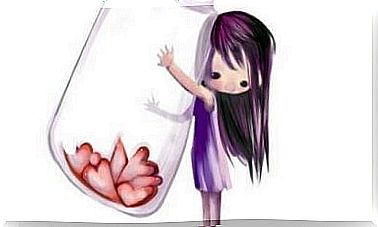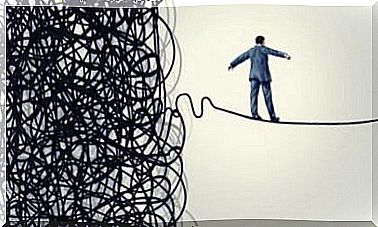Crying, Positive Or Toxic?

People cry for different reasons, from something that caused us great joy and that we would like to celebrate, to something that disappointed us or when we feel hopeless or frustrated.
Crying is a universal act, which is good to free ourselves and vent at certain times. It is not something that we usually do continuously, but we usually repress until we are with someone we trust or alone.
But tears also have a negative side. For example, when crying becomes an immediate response to a frustrated situation or negative event, or when we use it to manipulate and achieve what we want. In these cases, we use it for more than just emotional release.
With all this, we can differentiate between positive cries and negative cries. What is each of them?
Now we tell you!
Positive crying
” The tears shed are bitter, but more bitter are those that are not shed ” (Irish Proverb)
This is the cry that we usually try to suppress, either out of shame or because we don’t want to be seen as vulnerable.
1. Cry for pain
This is the first type of positive crying: crying when we feel hurt about something. When does this happen? When we lose someone, when they disappoint us, when they use us… There are multiple reasons why we cry for something that has hurt us.
It is in this type of crying, when we tend to withdraw to be alone with our pain. We are aware of something that we have lost and that we will not get back. We need a solitary, quiet place that allows us to cry until we completely vent.
2. Cry for changes
This second type of positive crying refers to the important changes that happen in our life and that modify it. For example, when we move, finish a degree, change jobs, get married, have a child, find a partner, etc.
There are many momentous changes in our lives that bring us tears, often the result of positive emotion. They help us to face change successfully.
3. Cry for discovery
This third type of positive crying is caused by the discovery of a truth that we did not know. This happens when we open our eyes to something that we did not see or did not want to see.
When we open our eyes to a situation whose truth we did not know, it is accompanied by tears, on some occasions. Why does this happen? because we have been blind and this “new awakening” impacts us in such a way that our reaction is crying.
The toxic cry
“ Crocodiles shed tears when they eat their victims. Behold his wisdom ”(Sir Francis Bacon)
After having delved into positive crying, we move into toxic crying. How can crying be toxic? What does this mean?
Let’s find out!
1. “Crocodile tears”
The “crocodile tears” or manipulative crying, are those that are used to change something at will. For example, when a child wants to get something from his mother, he uses manipulative crying. It is also used by speakers who want to excite their audience or simply give more emotion to what they are saying.
You have to be careful with this type of crying. We must not abuse it, because we will begin to lose credibility, every time we really cry. Usually, this type of crying is easy to identify. Sometimes, the people who use it do not have tears in their eyes, the crying stops immediately, their face shows fake expressions, etc.
2. Religious tears
These types of tears are given by religious beliefs. Tears were thought, as early as the Middle Ages, to be a kind of gift. That is why the prayers were mostly pronounced crying.
For example, with Easter now approaching, the mourners are a good example of this type of crying. They are usually women who cry in the procession to reflect the lament over the death of Christ. These women used to be hired to cry at funerals. It is a fake cry, not real and for religious purposes.
3. The search for crying
Sometimes, when we find ourselves sad, we need to look for something that forces us to cry in order to feel relieved and free from all that sadness. For example, we watch a movie or listen to a song that makes us cry. What is negative about this? Negativity appears when, without motives, we look for what makes us cry.
Crying plunges us into a state of melancholy and sadness that we generally avoid. Looking for it on a regular basis is not the most appropriate.
We have already seen the two types of crying that exist, but we must not forget another important fact: the false belief that crying is positive in women, and negative in men. This vision that has been imposed on us culturally, still prevails in our society, associated with the idea that crying is a sign of weakness.
But crying is not weak, men do not always have to be strong and whole. Crying is an emotion like any other and we all have the right to express it.









